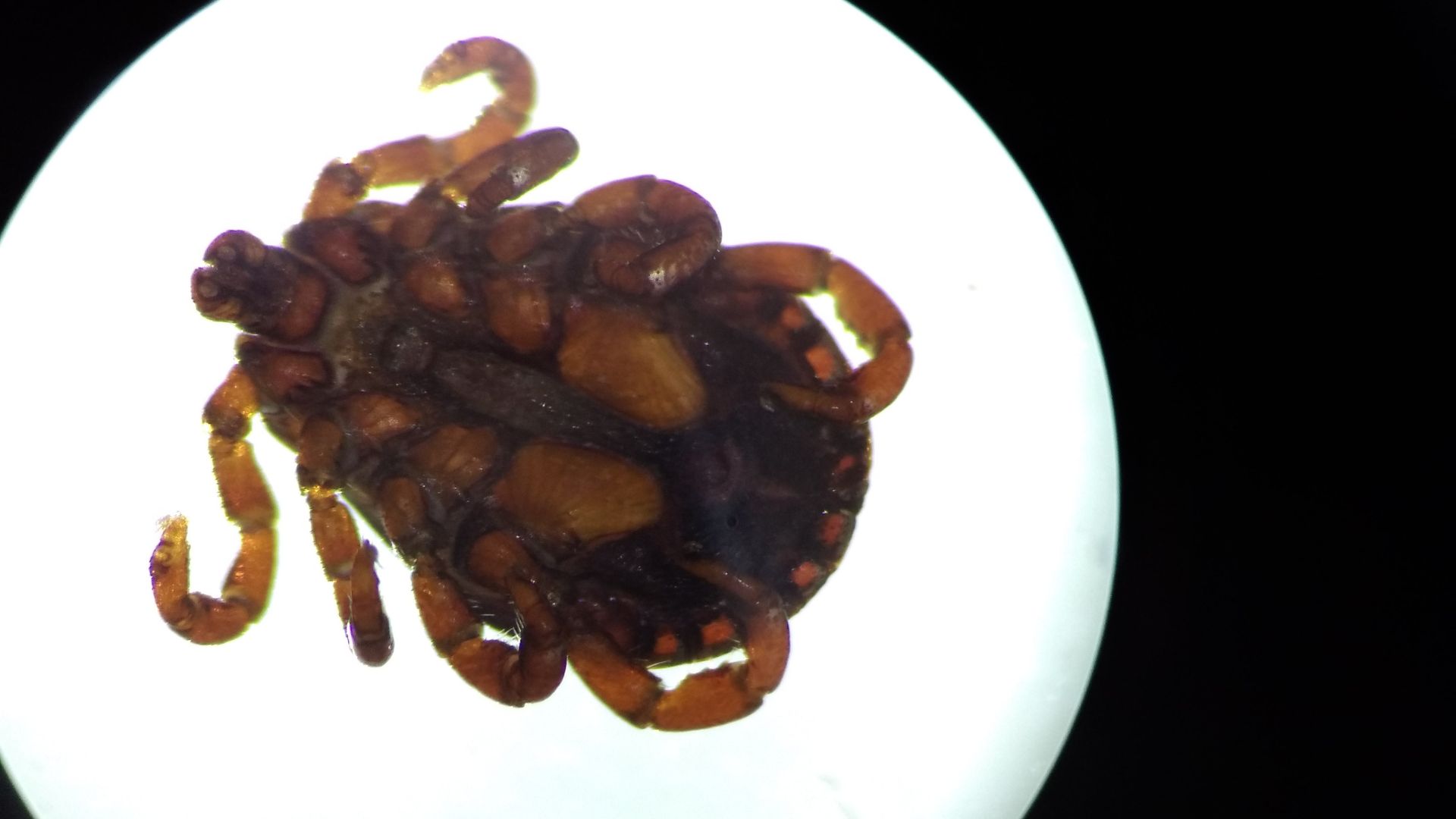New tick-borne virus discovered in China can affect the brain, scientists report
Scientists present evidence of a newly discovered tick-borne virus that can infect humans and potentially invade the brain, in some cases.

A new tick-borne virus discovered in China can spread to humans and sometimes cause neurological disease, scientists report.
The germ, dubbed Wetland virus (WELV), was first detected in a hospital patient who was treated in the city of Jinzhou in June 2019, according to a report published Wednesday (Sept. 4) in The New England Journal of Medicine.
The 61-year-old experienced fever, headache and vomiting approximately five days after visiting a park in a large wetland in Inner Mongolia, an autonomous region of northern China. He told doctors he'd been bitten by ticks at the park. Antibiotics didn't ease the man's symptoms, indicating that the infection wasn't caused by bacteria.
An analysis of DNA and RNA in the man's blood revealed a never-before-seen orthonairovirus — a group of related viruses that includes several carried by ticks. Other examples of these viruses include the one behind Crimean-Congo hemorrhagic fever, a rare and deadly illness that can spread to humans via tick bites or through exposure to infected people's bodily fluids.
Related: Tick season: What to know about bites, removing ticks and tick-borne diseases
WELV had not previously been seen in animals or humans. After uncovering the virus in the hospital patient's blood, the researchers went looking for it in ticks and animals in northern China, including in the wetland park the man had visited.
They collected nearly 14,600 ticks and grouped them by location and species so they could be analyzed in batches. Roughly 2% of those batches tested positive for WELV genetic material. Five tick species could harbor the virus, but proportionally, ticks in the species Haemaphysalis concinna tested positive most often. The virus was also detected in a small percentage of the sheep, horses and pigs the researchers looked at, as well as in a handful of rodents called Transbaikal zokor (Myospalax psilurus).
Get the world’s most fascinating discoveries delivered straight to your inbox.
Genetic material from the virus did not crop up in dogs or cattle, but some of these animals did carry antibodies against the virus, implying that their immune systems had at some point mounted a defense against the germ.
The team also analyzed blood from "apparently healthy" forest rangers and found that 12 out of 640 samples carried antibodies against the virus. In addition, they screened for the virus at four hospitals in northeastern China.
They tested for the virus in hundreds of patients who'd developed fevers within one month of a known tick bite, and 20 tested positive. Three were simultaneously infected with other tick-spread diseases, while the remaining 17 appeared to have only a WELV infection.
Those with WELV infections had common symptoms, such as fever, dizziness, headache, malaise and back pain, as well as nausea, vomiting and diarrhea. Lab results indicated signs of tissue damage and blood clotting in many of the patients.
Notably, one WELV-infected patient had gone into a coma. That patient had a high concentration of white blood cells — a sign of infection — in the fluid surrounding their brain and spinal cord. Thankfully, with treatment, "all the patients recovered and were discharged after 4 to 15 days," the researchers noted.
However, when the researchers tried injecting the virus into lab mice, they found that it could cause deadly infections, reaching many organs, including the brain. This finding backs the idea that WELV can cause serious infections of the nervous system.
"Taken together, these data suggest that a newly discovered orthonairovirus, WELV, is [pathogenic] to humans … and circulates among humans, ticks and various animals in northeastern China," the researchers concluded. "Improving surveillance and detection for emerging orthonairoviruses will allow a better understanding of the effect that these viruses have on human health."
Ever wonder why some people build muscle more easily than others or why freckles come out in the sun? Send us your questions about how the human body works to community@livescience.com with the subject line "Health Desk Q," and you may see your question answered on the website!

Nicoletta Lanese is the health channel editor at Live Science and was previously a news editor and staff writer at the site. She holds a graduate certificate in science communication from UC Santa Cruz and degrees in neuroscience and dance from the University of Florida. Her work has appeared in The Scientist, Science News, the Mercury News, Mongabay and Stanford Medicine Magazine, among other outlets. Based in NYC, she also remains heavily involved in dance and performs in local choreographers' work.


